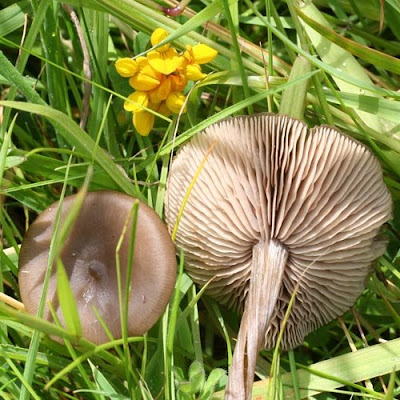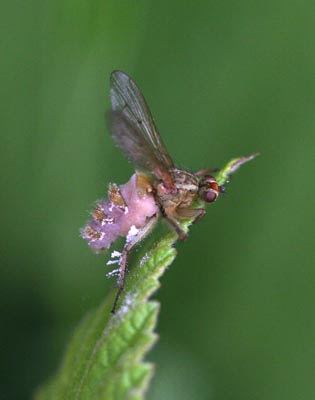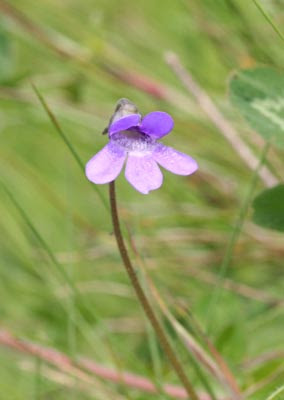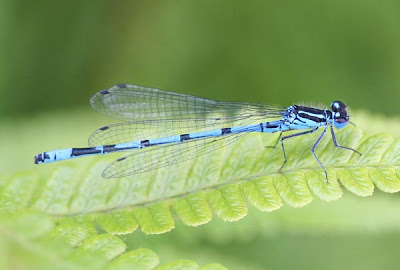 After a brilliant start to June, it has been very wet for the last two weeks. Today we got a bit of sunshine and I saw this tattered Speckled Wood basking in the sunlight:
After a brilliant start to June, it has been very wet for the last two weeks. Today we got a bit of sunshine and I saw this tattered Speckled Wood basking in the sunlight: Suddenly it was dive-bombed by another that chased it off and then occupied the same basking spot. This one is in better condition, but I think it's a little early for second generation specimens.
Suddenly it was dive-bombed by another that chased it off and then occupied the same basking spot. This one is in better condition, but I think it's a little early for second generation specimens. I think that the best colour on our hedgerows is provided by the flower-buds of Greater Birds-foot Trefoil:
I think that the best colour on our hedgerows is provided by the flower-buds of Greater Birds-foot Trefoil:
The red more-or-less dissappears when the flowers are mature. This flowerhead was juxtaposed with what looks like Melanoleuca melaleuca:
 To finish off: The Meadowsweet leaf-miner - Agromyza filipendulae. It has had to backtrack when it inadvertently bumped into its old track. (The mine starts in the purple centre portion, then goes clockwise until it gets trapped above the purple portion, when it resumes its clockwise track onto a new portion of leaf. Exit hole is bottom left.)
To finish off: The Meadowsweet leaf-miner - Agromyza filipendulae. It has had to backtrack when it inadvertently bumped into its old track. (The mine starts in the purple centre portion, then goes clockwise until it gets trapped above the purple portion, when it resumes its clockwise track onto a new portion of leaf. Exit hole is bottom left.)















